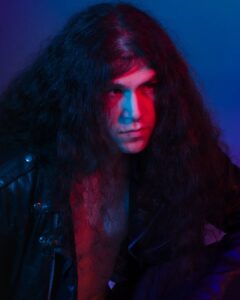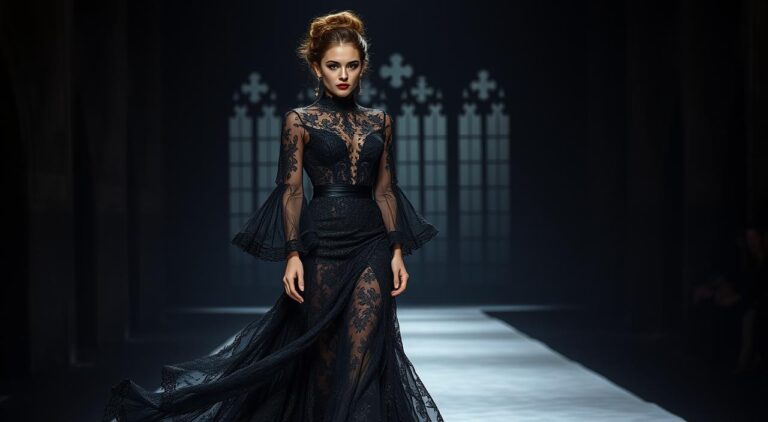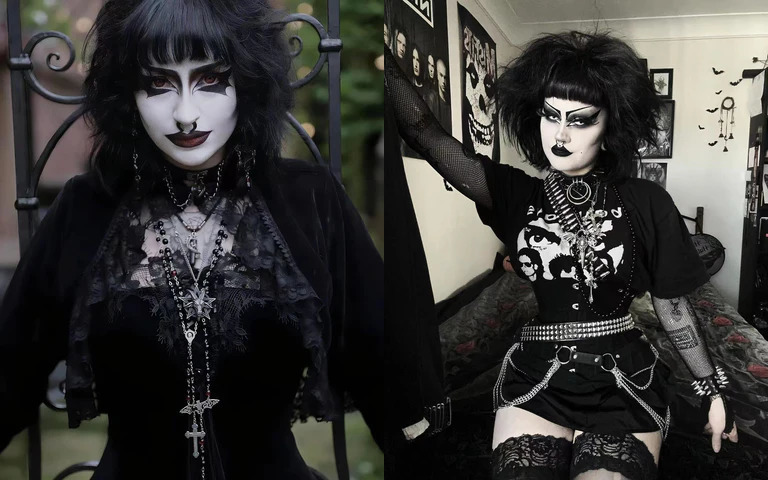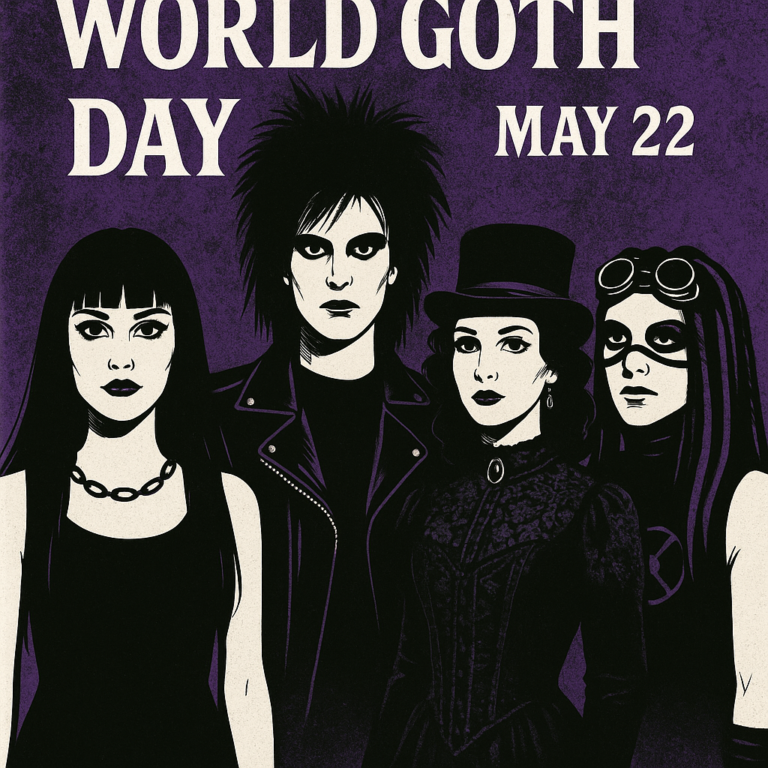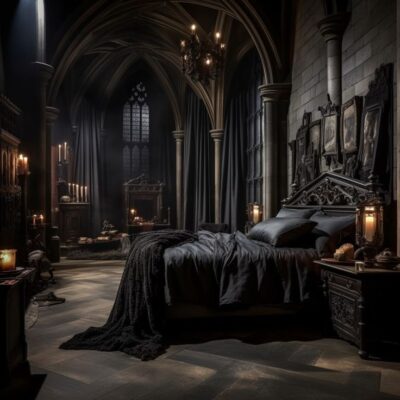Best Gothic Rock Bands (80s–Today)
When the lights went down and the eerie tunes started, the world of gothic rock blossomed like a night flower. Goth bands and gothic rock artists have been creating sonic maps of the beautiful darkness since the late 1970s, evolving from post-punk roots into deeply colorful subgenres that still lure listeners today. This guide has led you down the murky hallways of best goth music, familiarizing you with the first artists who darkened the canvas, the innovators who changed the color, and the contemporary musicians who still keep the black flame burning.
80s Goth Bands That Started Gothic Rock
The journey of gothic rock began after punk’s demise in the late 1970s when artists ventured into somber, reflective topics. It was during this period that bands that would later become the main pillars of the goth genre were established, not only setting the musical foundation but also establishing a visually interesting dressing culture, which remains the trademark of the gothic society.
Bauhaus, a band that is often considered the first real goth band, went on to create the genre’s distinctive sound and aesthetic for best goth music.
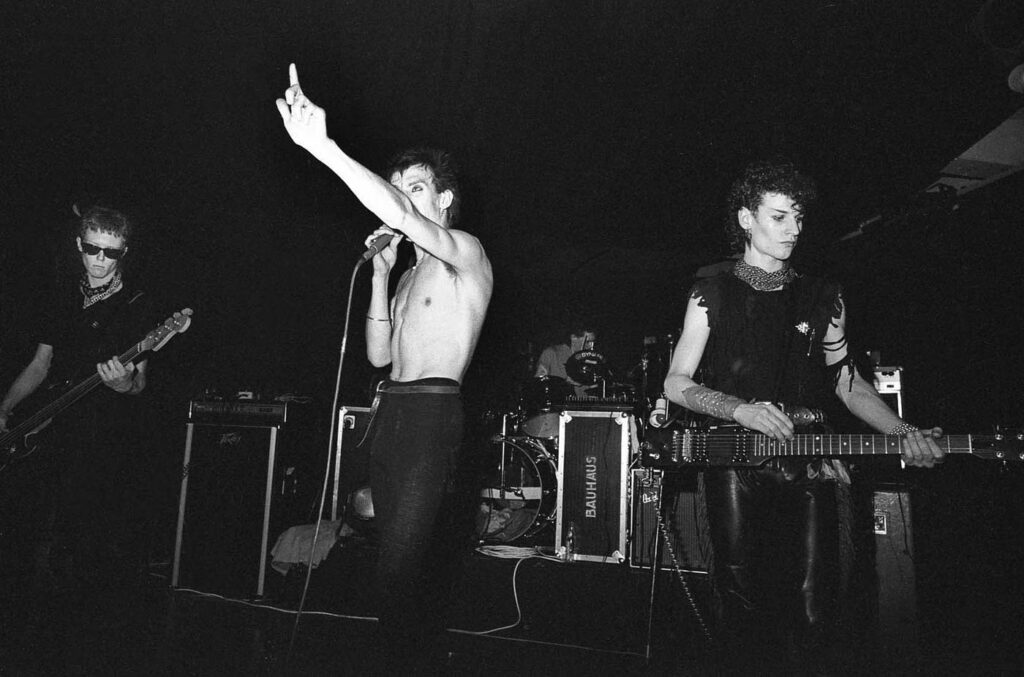
Bauhaus: The Godfathers of Gothic Rock
Any talk of bands that play gothic rock cannot exclude Bauhaus. This band was originally founded in 1978 in Northampton, England and they came out with a track called “Bela Lugosi’s Dead” which was nine minutes long and has become the symbol of gothic rock. Peter Murphy’s deep, theatrical vocals, Daniel Ash’s experimental guitar work, and lyrics that were inspired by horror movies made Bauhaus a band that so many goth artists will follow. It is common knowledge that their 1980 debut album “In the Flat Field” is the first true gothic rock album that is a merger of post-punk vigor and a very dark, morbid sensibility.
Siouxsie and the Banshees – One of the Most Popular Goth Bands
At first, they were a part of the punk scene but Siouxsie and the Banshees did not take long to change into something more dreamy and complicated. Siouxsie Sioux, who is a very famous singer and also her unique voice and image, had become a symbol of gothic style, led a band that had a sound that was characterized by swirling guitars, tribal drums, and poetic lyrics that talked about alienation and the supernatural. The albums “Juju” (1981) and “A Kiss in the Dreamhouse” (1982) are considered to be the greatest examples of early gothic rock, they can be found as the source of inspiration for artists of different genres, for many years.
The Cure: From Post-Punk to Gothic Legends
Robert Smith has, in many instances, denied that The Cure is a “goth” band but their impact on the genre cannot be questioned. The band, starting with “Seventeen Seconds” (1980) and culminating with “Pornography” (1982), a gothic masterpiece, formed a sound that was defined by the deep reflective lyrics, the atmospheric instrumentation, and Smith’s unique voice. Melodically carrying the darkness made them the most accessible goth bands, thus enabling them to be the pioneers of the goth genre’s aesthetics being introduced to a wider audience without compromising the integrity of the art.
Joy Division: The Dark Heart of Post-Punk
Though their career was tragically cut short due to the suicide of frontman Ian Curtis in 1980, Joy Division’s legacy in the world of gothic rock is still untouchable. They are one of the most influential gothic rock bands, and themes of loneliness and depression remain a topic of discussion in the gothic community. The works “Unknown Pleasures” (1979) and “Closer” (1980) are the perfect bridge between post-punk and gothic rock with their eerie and melancholic vibe.
Uncover the basic elements of that sound which breed the genre of gothic rock.
Top 90s Gothic Rock Bands
and Best Goth Songs of the Era
The nineties were the decade when gothic rock got various new faces and became more diversified, as renowned bands polished their sounds and new artists experimented with the genre. This period marked the beginning of the amalgamation of gothic with heavier elements such as metal, electronic music, and industrial which eventually led to the creation of various hotly debated subgenres while still being true to the dark, atmospheric core that characterizes goth music.
The Sisters of Mercy pioneered a darker, more mechanical approach to gothic rock that defined the genre’s evolution.
The Sisters of Mercy: Gothic Rock Perfected
Indeed, the legendary Andrew Eldritch-powered The Sisters of Mercy were the kings of today’s rock genre from the dark gothic quarter of town. Eldritch’s unique deep voice, electronic percussion (thanks to the drum machine “Doktor Avalanche”), and Wayne Hussey’s atmospheric guitar combined to create a sound that was at once gloomy, danceable, and theatrical. The albums “First and Last and Always” (1985) and “Floodland” (1987) confirmed them as gothic rock royalty, their influence went well into the 1990s and even beyond, however, Eldritch’s famous denial of the “goth” label did not change that.
Type O Negative: Gothic Metal Pioneers
Peter Steele’s figure was so huge that it was difficult to place him beside the name of the Brooklyn band Type O Negative, his mere presence brought gothic sensibilities into the world of heavy metal. Their breakthrough album “Bloody Kisses” (1993) was the perfect combination of doom metal heaviness, gothic atmosphere, and dark romanticism. Steele’s bass-baritone reminiscent of the “vampire Elvis” became one of the most recognizable voices pop music alternative music has ever heard, while the band’s sardonic humor and sexual themes brought new facets to the gothic expression. Type O Negative was one of the most favorite crossover acts in the gothic metal scene until Steele’s sudden death in 2010.
Fields of the Nephilim: Mystical Gothic Western
Fields of the Nephilim are known for their unique cowboy look and their frontman Carl McCoy’s gravelly voice. They have created a very interesting combination of gothic rock and mystical themes. The band took their inspiration from occult writer Aleister Crowley and spaghetti westerns and thus they have created a sound that is atmospheric and powerful. The album of 1990 “Elizium” is the apex of their atmospheric style, thus providing listeners with the ability to experience otherworldly realms via the immersive soundscapes.
London After Midnight: The American Gothic
The band London After Midnight was started by Sean Brennan in 1990 and it is recognized as the most significant American contribution to the gothic rock scene. By mixing elements of traditional goth rock with electronic and industrial influences, LAM established a sound that was both accessible and authentically dark. Their 1998 self-titled album has been hailed as one of the most influential records within the goth community and the addition of Brennan’s impressive visuals and socially aware lyrics lends a new dimension to the gothic aesthetic.
Walk with me on the path of the evolution of gothic rock in the 1990s.
2000s Revival & Subgenre Fusion in Gothic Rock
The first decade of this century saw the gothic scene rejuvenated with bands experimenting with elements from various genres, yet the dark core of gothic music remained intact. The new millennium is an era where gothic rock has reached the peak of its popularity through crossover acts that combined gothic sensibilities with more mainstream sounds.
HIM’s “Love Metal” brought gothic sensibilities to mainstream audiences in the 2000s
HIM: Love Metal and Mainstream Gothic
Finland’s Ville Valo-led HIM, one of the most popular goth bands of the 2000s, went all the way with their “love metal” album, a mix of gothic rock, heavy metal, and pop sensibilities. This self-description catch-meet, the heartagram symbol was an iconic image of the 2000s alternative scene, while incendiaries such as “Join Me in Death” and “The Funeral of Hearts” brought gothic themes to radio stations worldwide. The further two “Deep Shadows and Brilliant Highlights” (2001) and “Dark Light” (2005) have been the case of their ability to fuse commercial appeal with authentic gothic darkness.
Lacuna Coil: Gothic Metal Evolution
Using a style that featured two voices of contrasting genders, Italy’s Lacuna Coil ventured into the goth metal world to extend their tonal capabilities. Their vocalist Cristina Scabbia has a very high-pitched voice and Andrea Ferro shouts aggressively. The “Comalies” (2002) and “Karmacode” (2006) albums intermixed the heavy guitar parts with atmospheric keyboard and pop-influenced melodies thus creating a sound that was acceptable both to metal and gothic rock fans. Their visual aspect, which refers to the combination of traditional gothic elements with modern fashion, is what makes the update of the genre’s image for the new generation possible.
The Birthday Massacre: Synthpop Gothic
The Birthday Massacre from Canada injected the goth scene with a burst of energy by fusing their dark musical themes with the upbeat synthpop and electronic genres. Purple, their signature color, and lead vocalist Chibi’s unique voice gave them a distinct identity, and along with albums “Violet” (2004) and “Walking With Strangers” (2007), the band showcased their talent to combine the catchy with the disturbing. Their words had a lot to do with the fear of childhood and the dark side of the fairy tales and thus they were able to add a new dimension to the gothic rock genre.
The 69 Eyes: Goth ‘n’ Roll
Debut single “Goth ‘n’ Roll” by Finnish band 69 The Eyes was a great example of the combination of gothic rock and glam-inspired hard rock.’ The bandleader and vocalist Jyrki 69’s deep Elvis-like voice and the band’s image of leather-clad created a bridge between gothic rock and traditional rock audiences. “Paris Kills” (2002) and “Devils” (2004) both albums had, as a common feature, the band’s ability to write catchy, darkly romantic songs that gave the gothic credence, while broadening the scope of the gothic genre.
Find out the way gothic rock has taken a turn in the new millennium.
Modern Goth: The New Wave of Gothic Rock Bands
The gothic rock heritage is very much alive and powerful in the new era, making way for a band of fresh artists who look back to the oldies and bring the new times influence with them resulting in a synthesis of the old and the new. These bands still carry the dark gothic rock spirit but evolve the genre toward exhilarating new directions.
She Past Away has revitalized the coldwave aspect of gothic rock with its Turkish-language approach.
She Past Away: Turkish Gothic Revival
Initially established in Bursa, Turkey in the year 2006, She Past Away has made a name for itself in the modern gothic music scene. Singing in Turkish, the duo has a very classic post-punk and coldwave style, but at the same time, they use a modern production that gives their music a feeling of being both vintage and contemporary. The records “Belirdi Gece” (2012) and “Disko Anksiyete” (2019) are perfect to show the duo’s capability of nailing the spirit of early 80s gothic rock while still being able to add their distinctive flavor. Their worldwide fame is definitely proof that gothic rock is still a global language of darkness.
Lebanon Hanover: Minimal Gothic
A band made up of two persons from the UK and Germany, Lebanon Hanover is widely regarded as the exemplary figure of the modern minimal wave and gothic rock revival. Their toned-down concept, including the least instrumentation, chilly synths, and the different voices of Larissa Iceglass and William Maybelline, results in a gothic sound that is both old and new. For the first time, albums such as “Why Not Just Be Solo” (2012) and “Tomb for Two” (2018) contain the core of gothic melancholy, and their black-and-white style reaffirm the loyalty to gothic traditions.
Twin Tribes: Darkwave Revival
The Texas-based Twin Tribes has really made it clear that they are the leaders in the darkwave scene today after their formation in 2017. Their sound is a mix of classic gothic rock and synth-heavy production as well as bilingual lyrics (English and Spanish), which makes the music that they create a tribute to the past, yet feeling very current. The albums “Shadows” (2018) and “Ceremony” (2019) reveal their musical skills to invent catchy tunes and atmospheric soundscapes that will appeal to those who have been fans of gothic rock for a long time as well as to the new ones who are still not familiar with the genre.
Drab Majesty: Ethereal Gothic
Deb Demure (Andrew Clinco) Los Angeles-based Drab Majesty as the prime mover and shaker of the ethereal wave, post-punk, and shoegaze elements created a unique position in the modern gothic world.
The androgynous look and science fiction motifs injected into gothic themes are novel aspects, and albums such as “The Demonstration” (2017) and “Modern Mirror” (2019) offered compelling examples of their capability to produce the convincing, alien-like sonic worlds that make the boundaries of the gothic rock genre become more elastic.
Learn about the most innovative part of the contemporary gothic rock genre.
Goth Rock Bands Beyond Music:
Fashion & Subculture of Gothic Rock
The gothic rock genre is not only the music itself but a comprehensive aesthetics and culture including the elements of fashion, literature, art, and philosophy. Visual components related to goth bands have been as instrumental as their sound manifestation in shaping a subculture that still is able to evolve, but on the other hand, it stays intact at its core.
The gothic subculture encompasses diverse fashion styles that have evolved alongside music.
The Gothic Aesthetic: From Stage to Street
The gowns of gothic rockers greatly affected fashion and personal style. It was one of the most memorable gigs of Siouxsie Sioux, a Dr. Jekyll and Mr. Hyde-inspired eye make-up contest, which was followed by Peter Murphy’s vampire personality and The Sisters of Mercy’s leather. Most notably, The Cure’s disheveled romanticism fans adopted the visual language of their favorite gothic rock artists and adapted it for themselves. The gothic fashion aesthetic—the black clothing, Victorian and Edwardian influences, religious symbolism, and dramatic makeup—became a form of personal expression that allowed individuals to externalize their appreciation for darkness, melancholy, and the macabre.
Gothic Rock Style Evolution
Gothic fashion has changed significantly over the years, paralleling the music. Each epoch brought some new facets to the table but still adhered to the same aesthetic principles. The early 1980s were characterized by do-it-yourself, post-punk-styled fishnet, leather, and dramatic makeup. The 1990s were a period where fashion picked up more intricate Victorian and romantic cues, and the next decade witnessed a merger of several subgenres: industrial, cyber, and steampunk. The present-day gothic fashion scene is today very diverse, ranging from traditional “trad goth” looks to pastel goth, romantic goth, and gothic lolita styles, all while maintaining the connection to the music that inspired them.
Gothic fashion has evolved from its post-punk roots to encompass diverse styles while maintaining core aesthetic elements.
Community and Identity in Gothic Culture
In the past, and even now, gothic rock has certainly helped those people who have feelings of being outsiders in the world even beyond the effects of music and fashion. People, who love gothic rock, can meet, share their passion, and be themselves in places such as gothic clubs, festivals (Wave-Gotik-Treffen in Leipzig), or online communities. It is the brightness of the subculture’s dark tone, a little depressive note, and its horror references that provide a structure to the processing of one’s emotions and entertaining parts of human experience that are often neglected in the cultural mainstream, thus giving to it a very meaningful identity for many of the followers.
Look into the visual realm of gothic rock and its impact on culture.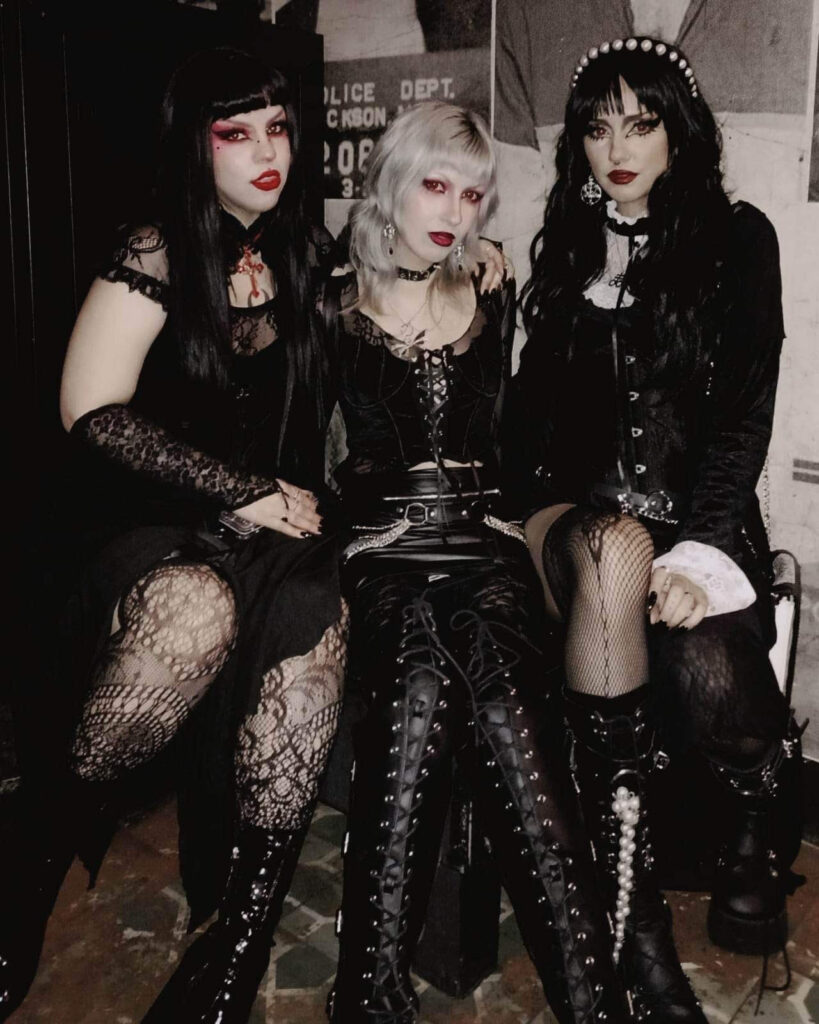
15 Essential Gothic Rock Albums Every Fan Should Know
Though individual tracks might act as invitations into the gothic rock scene, the albums herein are visual totalities, each of them an example that the genre goes the entire road. Initiatory footprints that mapped out the gothic rock’s groundwork to the present-day studios that keep on with its evolution, these albums are the depth and diversity of gothic music.
The album of gothic rock is represented by the medium of the visuals for the music of the genre that is very atmospheric and dark the dark nature of the music itself.
Bauhaus – “In the Flat Field” (1980) – The record that originated gothic rock as a separate genre, with Peter Murphy’s theatrical vocals and the band’s experimental approach to post-punk.
The Cure – “Pornography” (1982) – Robert Smith’s composition of misery, a deeply beautiful darkness that was presented in an immersive manner was the emotional core of the gothic rock.
Siouxsie and the Banshees – “Juju” (1981) – An exemplary combination of the high energy of post-punk and atmospheric gothic that featured the most famous and iconic tracks like “Spellbound” and “Arabian Knights.”
The Sisters of Mercy – “First and Last and Always” (1985) – The grave voice of Andrew Eldritch and Wayne Hussey’s guitar were instrumental in outlining the classic gothic rock.
Joy Division – “Closer” (1980) – The album was released after the suicide of Ian Curtis, its music was chilling and its lyrical themes of loneliness deeply the development of gothic rock.
Fields of the Nephilim – “Elizium” (1990) – A spiritual journey deeply colored with atmospheric sounds and words of Carl McCoy, who was like a crow.
Type O Negative – “Bloody Kisses” (1993) – Peter Steele’s gothic metal work of art, was a combination of doom metal heaviness with dark romanticism and sardonic humor.
The Mission – “God’s Own Medicine” (1986) – Wayne Hussey’s project after he left Sisters created a more accessible but still atmospheric version of gothic rock.
Christian Death – “Only Theatre of Pain” (1982) – Rozz Williams’s deathrock classic made American gothic sensibilities more prominent.
Dead Can Dance – “Within the Realm of a Dying Sun” (1987) – Alliance of Lisa Gerrard and Brendan Perry’s gothic rock incorporating world music and neoclassical elements.
HIM – “Razorblade Romance” (2000) – Ville Valo’s “Love Metal” introduced goth themes to the pop market with singable tunes and dark romanticism.
London After Midnight – “Selected Scenes from the End of the World” (1992) – Sean Brennan’s American gothic rock classic was a perfect balance of traditional elements and electronic innovations.
Lebanon Hanover – “Tomb for Two” (2018) – A contemporary minimal wave that exactly reflects gothic sadness in the 21st century.
She Past Away – “Belirdi Gece” (2012) – Turkish coldwave that substantially contributed to the resurrection of the post-punk and gothic rock music of the old days.
Drab Majesty – “The Demonstration” (2017) – The muzzy, space-inspired goth rock work that goes beyond the traditional approaches of the genre and still pays homage to it.
Start your gothic rock collection by getting these essential albums.
Explore Gothic Rock on Bandcamp
The gothic rock tradition is alive and well as new artists keep coming out. Bands of today pay homage to the genre’s illustrious past and at the same time they bring new ideas and make the gothic scene more alive. These artists represent the bright future of gothic music as they range from traditional approaches to innovative fusions.
The modern gothic scene continues to thrive with emerging bands from around the world.
Kælan Mikla – The Icelandic female trio Kælan Mikla merges darkwave music, poetry, and Nordic heritage to form a deeply atmospheric sound that even The Cure’s Robert Smith has acknowledged their fan base with.
Selofan – The Greek band Selofan stands as the representatives of the European minimal wave scene in their analog darkwave and coldwave attempt to create music that not only looks back to the past but is also looking forward.
Creux Lies – This Sacramento band that has described themselves as “party goth” infuses goth rock elements with more dance-friendly beats and catchy hooks while still keeping the genre’s dark side intact.
Rendez-Vous – This French four-piece draws inspiration from the French cold wave and delivers a forceful and driving interpretation of gothic rock, a blend that conjures up both the nostalgia and the present moment desperately.
ACTORS – ACTORS of Vancouver are the merging of post-punk, new wave, and gothic genres along with the infusion of modern production methods that result in the sound that facilitates the journey across decades and at the same time remains distinctively theirs.
Ash Code – This trio of Italian darkwave light the torch of coldwave of the past very much and at the same time, they are injecting it with modern electronic elements, thus giving birth to danceable yet sorrowful tunes that will satisfy both the traditional goths and the newcomers.
Dool – Dutch band Dool adds gothic rock with progressive and psychedelic elements, resulting in a sound that is simultaneously vast and darkly cozy.
Bestial Mouths – This project is led by Lynette Cerezo and it is an amalgamation of ritual industrial, darkwave, and performance art elements resulting in a deeply sensational interpretation of gothic music.
TRAITRS – They are a duo from Toronto and their sound is an amalgamation of post-punk, darkwave, and shoegaze elements which culminate in a deeply emotional gothic rock that is both traditional and modern.
Meet the new generation of gothic rock artists.
Timeline of Goth Subgenres:
The Evolution of Gothic Sound
Gothic rock has spawned numerous subgenres and related styles over its four-decade history. This timeline traces the evolution of the gothic sound from its post-punk origins to the diverse landscape of today, showcasing how the core elements of gothic music have been reinterpreted and expanded through different musical approaches.
The gothic sound has evolved into diverse subgenres while maintaining core atmospheric and thematic elements
1978–1983: First Wave Gothic Rock – Directly transitioning from post-punk, bands such as Bauhaus, early The Cure, and Siouxsie and the Banshees laid the essential gothic rock sound with gloomy guitars, catchy bass, and lyrics inspired by existential dread.
1982–1985: Deathrock – The United States of America offshoot of the British gothic rock scene, which was the new path for bands like Christian Death, 45 Grave, and early TSOL, their music was a more horror-driven approach using punk energy and macabre themes.
1984–1989: Second Wave Gothic Rock – The Sisters of Mercy, The Mission, and Fields of the Nephilim were changing gothic music by making more polished production, programmed drums, and keeping dark themes while being more accessible.
1985–1993: Ethereal Wave / Ethereal Goth – With Cocteau Twins, Dead Can Dance, and This Mortal Coil at the forefront of this subgenre, the emphasis was on atmospheric soundscapes and ethereal female vocals, hence creating dreamlike gothic music.
1988–1995: Gothic Metal Emergence – Paradise Lost, Type O Negative, and early Lacuna Coil mixed doom metal’s heaviness with gothic atmospheres and romantic themes, thus representing a heavier version of gothic music.
1990–1997: Darkwave Revival – With Lycia, Black Tape for a Blue Girl, and Faith and the Muse, traditional gothic elements were merged with ambient and electronic genres to create deeply textured atmospheric music.
1995–2005: Industrial Goth / Cyber Goth – The amalgamation of gothic style with industrial and electronic dance music was best exemplified by London After Midnight (later work), The Crüxshadows, and Diary of Dreams.
2000–2010: Gothic Rock Mainstream Crossover – HIM, Evanescence, and Within Temptation ventured into lighter gothic territories by employing more catchy songs and still dealing with dark themes, thus reaching out to mainstream audiences.
2008–2015: Witch House / Grave Wave – A marriage of gothic spirits with trap rhythms, chopped and screwed effects, and the occult, fanned artists such as Salem, Zola Jesus, and Crystal Castles.
2010–Present: Post-Punk / Coldwave Revival – Lebanon Hanover, She Past Away, and Molchat Doma brought back post-punk and coldwave of the past to the present and sometimes on a minimal scale.
2015–Present: Gothic Folk / Neofolk Fusion – Chelsea Wolfe, King Dude, and A.A. Williams have pulled gothic sensibilities with folk and acoustic components to produce very dark but still very intimate music.
Go through the many different types of gothic music.
The Enduring Legacy of Gothic Rock Bands
Since the late 1970s till now, gothic rock has been a great example of the genre’s resilience and adaptability. A post-punk offshoot has turned into a deep musical tradition with no boundaries and an infinite cultural influence. The best Goth bands have been doing it for ages balancing black with white, hopelessness with romanticism, and making music that and the ones who crave emotional profundity and atmospheric intensity resonate.
The gothic era has had both musical and visual impacts on the various artists’ work from different genres, be it mainstream or experimental electronic music. In the meanwhile, the devoted gothic rock music industry, as well as the new bands after the previous eras, keep coming up, each adding their unique perspectiveness to the genre, while simultaneously being faithful to the traditions. As long as some people are attracted by exploring the shadows, beautifying the sadness, and finding the full range of human emotion, gothic rock will be alive and well.
Whether you are a die-hard fan of the genre or just a newcomer, the gothic rock scene is overflowing with gems for anyone who dares to dive into its depths. From the groundbreaking music of Bauhaus and Siouxsie and the Banshees to the present-day trailblazers like She Past Away and Lebanon Hanover, goth bands are still making music that provokes, excites, and sparks creativity. The black flame is still alive, lighting the dark with its eerie light.
Start a journey into the world of gothic rock or strengthen your bond with it.


